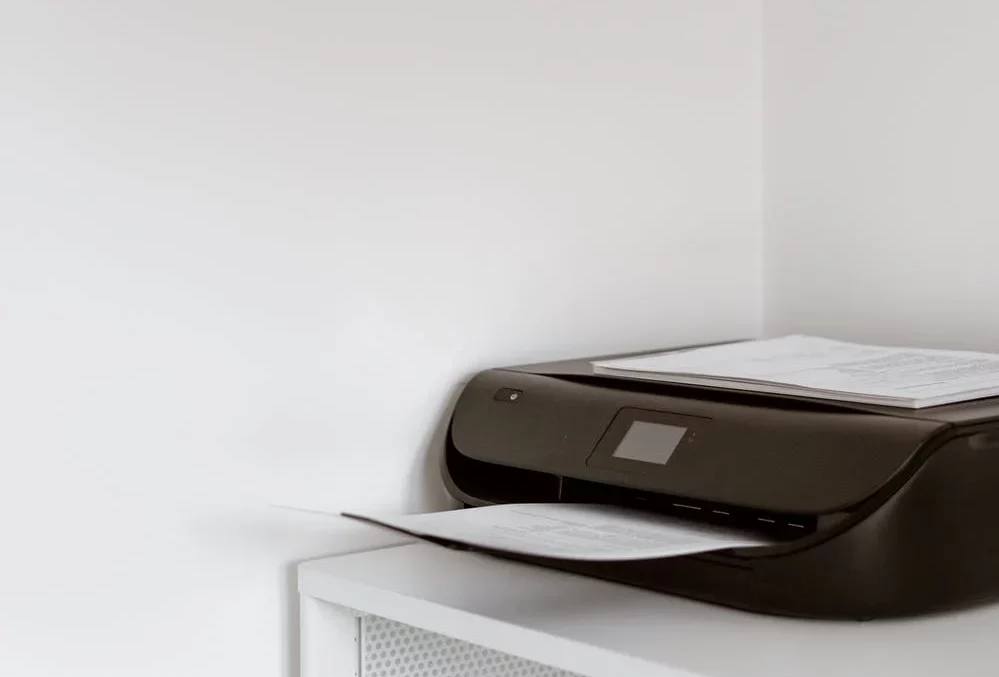Framed and Exposed: Buying a Photo Printer, Part 2

In the previous “Framed and Exposed,” I began a discussion of how to choose a photo printer. Since inkjet printers currently deliver better image quality than other color printing technologies, I discussed the merits of different ink options and outlined the criteria you can use to evaluate output quality.
When it comes to photo printing, image quality should be your final arbiter of which model to choose. However, this doesn’t mean that you don’t need to consider other factors and characteristics. Many vendors include the same print engine in several different models, which all sport different feature sets, so once you’ve picked the image quality you like, you then have to decide what other options you need. (In rare cases, you might need to consider features over image quality, as in the case of portable printing.)
To wrap up this photo printing buying guide, I’ll look at the other features you need to consider. I’m assuming you’re looking for a printer for creating high-quality, possibly archival prints of your digital photos. If you need a color accurate proofing system for a prepress workflow, that’s a different subject, although there is some overlap.
Size It Up
After image quality, your most critical choice will be to select a printer that’s capable of the print sizes you’re looking for. Most desktop printers accept paper that’s 8.5 inches wide, just like any office printer. These printers let you print all the standard photo sizes up to 8×10 inches. If you know you don’t need to print larger than 8×10 inches, then one of these letter-sized printers is a good choice. If you do a lot of panoramic photography, you may want choose to a letter-sized printer that can support roll paper, useful for printing very long panoramas.
For prints larger than 8×10 inches, look at printers that support larger paper. Most major printer companies sell photo printers that support sheets up to 13 x 19 inches. As with letter-sized printers, many of these have roll-feed options for longer pages.
For even larger sizes, you need a large-format printer. Usually too big to sit on a desk, these units print on paper that typically ranges from 24 inches wide to 50 or 70 inches wide.
After paper size, consider your need for borderless printing. Because the printer has to hold the paper to move it through the printing path, not every printer can print all the way to the edge of the page. If you want borderless printing, then make sure that the model you’re looking at can print borderless at all of your desired print sizes. Bear in mind that some printers slow down when printing borderless, and that some can’t guarantee full image quality at the edges of the page when printing borderless.
Once you’ve found a printer that yields the image quality you want at the size you need, don’t forget about its physical size and how much more space it needs for feeding paper and delivering the final print. Will it fit where you want to put it?
Media Matters
In general, it’s best to use media manufactured by your printer vendor. The drivers included with printers are tailored to specific vendor-supplied paper and, though you can use third-party papers with excellent results, you might have to spend time figuring out ideal settings for these papers.
If you plan on sticking with a printer company’s paper stock, check out the options before committing to a particular printer. For example, does the company provide a good range of matte, luster, and glossy papers? If you have a specific need-, for example, an RC-type paper or canvas-verify that the vendor produces such a paper.
Printing on CD and DVDs can be a valuable option if you regularly produce work on disk.
If you routinely print on strange materials (such as homemade paper), check the maximum media thickness that your printer can handle. Make sure it has a straight-through paper path, which lets you print on less flexible materials, such as heavy cardstock.
Think Ink Tanks
Some printers include a separate ink tank for each printing color. Others bundle all colors into a single tank. Because you hardly ever run out of all colors simultaneously, bundled ink tanks almost always force you to throw away unused ink. Separate tanks improve your per print cost by giving you a finer degree of control over your ink management.
If you expect to produce a lot of prints, look for printers that accommodate an external inking system. These are large tanks that sit outside the printer and are fed by hoses and pumps into the printer head. Currently, all such systems are third-party concoctions, which means you’ll get no direct support or encouragement from a printer vendor when looking at these options.
Similarly, vendors don’t volunteer information about alternative ink options. Some printers are well supported by third-party ink vendors, who provide other ink options for specific models. Third party archival inks are often more durable than stock inks, while third-party quad-tone inks provide improved black and white printing. Research these inks thoroughly before using them, as running non-supported ink through your printer will certainly void your warranty, and can cause damage. To begin your research, go to:
Complete Digital Photograpy: Quadtone Inks
Complete Digital Photograpy: Archival Inks
Connection Types
Although connecting printers to computers and networks used to be a problem spot, those issues are largely resolved today. Current printers have USB 1 ports, and some add USB 2 and Firewire ports. If your computer has a USB 1 interface, it will work with a USB-2 printer, though more slowly. (You might want to upgrade your computer-side USB interface to benefit from the extra speed of USB-2.)
If you work in a group, think about a printer with built-in Ethernet networking. If you can’t find the quality and options you want in a networkable printer, you can always add an external wired or wireless USB print server.
Printers with built-in Bluetooth are becoming more prevalent. Bluetooth allows you to print wirelessly from your Bluetooth-equipped computer. With a wireless range of up to 20 feet, you may find Bluetooth worthwhile if you want to place your printer in an out-of-the-way location.
Color Management
A printer with color-management support doesn’t do you any good if the rest of your system isn’t calibrated. If you are running a calibrated system, it’s important that the printer include color-profile support. (Make sure the printer company provides well-rated profiles for each type of media the printer supports.) Even if you’re not currently running a calibrated system, you never know when it might become necessary. Fortunately, almost all printers today ship with ICC profiles.
Speed and Text Printing
Photo printing speed is something of a luxury issue. If your goal is to get the best prints that you can, then speed shouldn’t be a deal-breaker. However, if you need to crank out the best prints you can as quickly as possible, then pages per minute might be a legitimate concern. Vendors will list speed claims for their printers. When looking at speed ratings, be sure you’re reading the speeds for your intended print sizes.
In this article, I’m talking about photo printing. Of course, these kinds of printers also print text documents, but you should have a separate printer for that. With the high cost of photo inks, especially archival photo inks, using your photo printer to produce pages of text is impractical. However, if you absolutely must print text on your photo printer, print sample text to see whether the output quality is crisp enough for your purposes. In the early days of photo printers, text quality often suffered. This is not as big of an issue with current printers, but it’s still worth looking into, as is text printing speed.
Other Options
Direct printing, which lets you plug a camera or media card into the printer and print images without first moving them to your computer, is an increasingly popular feature. Direct printing gives you the digital equivalent of a Polaroid, and you can quickly crank out prints as soon as you shoot them. The downside, of course, is that there’s no on-printer way to adjust or correct the print.
In addition to speedy proofing, direct printing can be ideal for movie production designers and location scouts, fashion photographers, and anyone else who traditionally depends on a Polaroid camera.
When evaluating a direct-printing option, ensure that the printer works with your camera’s direct-printing technology. Or, if you plan to print directly from media cards, be certain that the printer accepts your media of choice.
If direct printing is something you really need, then the print-selection mechanism is an important variable. If the printer has a color LCD screen, you’ll be able to scroll through thumbnails and select the images you want. If not, then the printer might print a series of numbered thumbnails and let you select your desired images that way.
For the ultimate in Polaroid equivalency, buy a printer that can run on batteries. Most battery-powered printers are limited to 4×6 inches prints.
That’s a Wrap
I’ve given you a long list of factors to weigh when buying a photo printer. While the number of variables may seem overwhelming, the good news is that most photo printers are inexpensive. In almost every instance, you’ll buy the printer for roughly the cost of the plastic. That’s because printer makers make their money by selling ink and paper. To avoid an unpleasant surprise the first time you buy these consumables, don’t forget cost-per-print when making your choice.
This article was last modified on December 14, 2022
This article was first published on April 6, 2005




